UCL’s Sainsbury Wellcome Centre is a translucent experimental laboratory
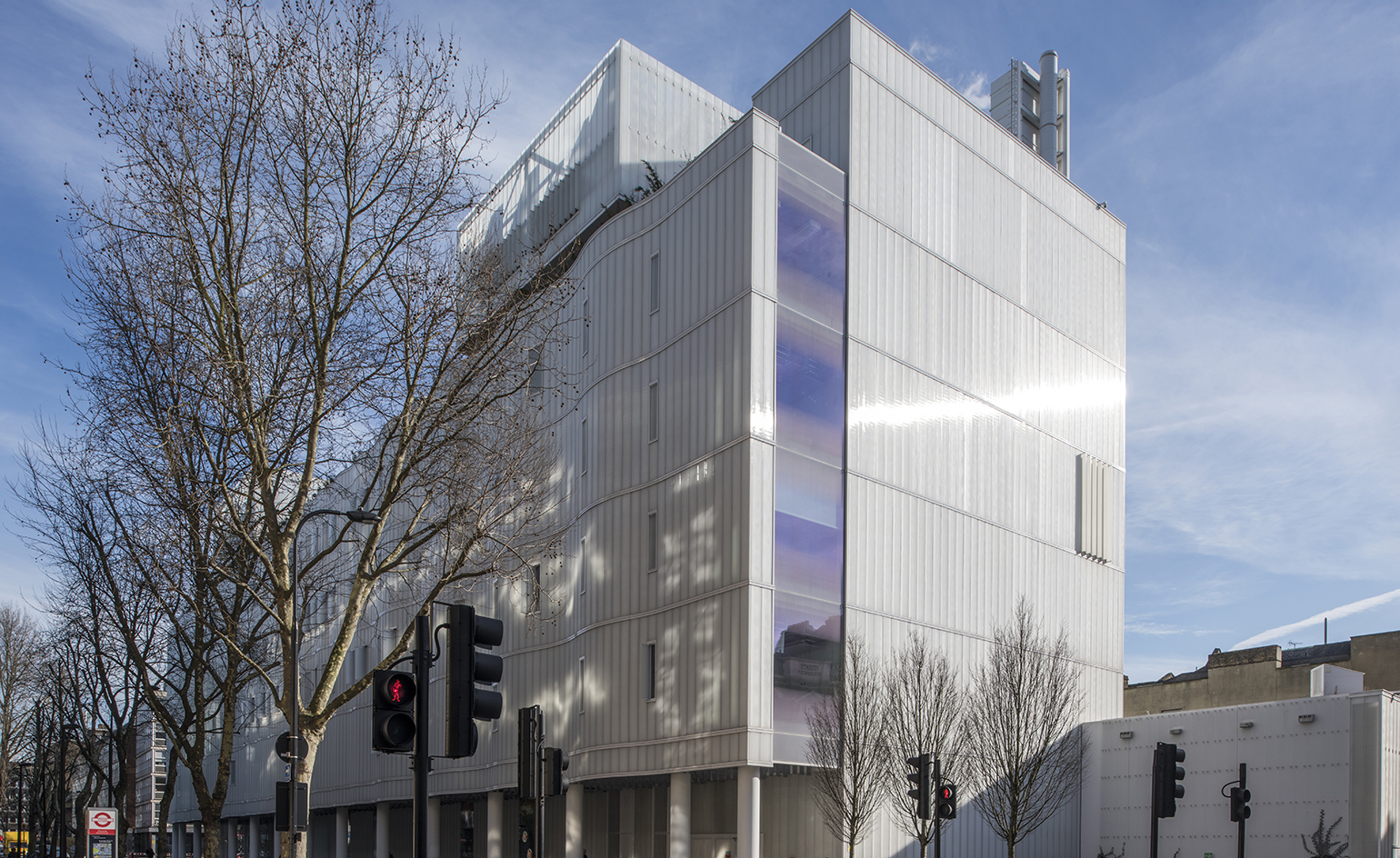
Replacing an existing UCL research centre from 1959, the London school’s brand new Sainsbury Wellcome Centre has just completed. The project, designed by Ian Ritchie Architects, is a state of the art laboratory and is set to be the new home for the Gatsby Computational Neuroscience Unit (GCNU).
Ritchie and his team won the project following an international competition. They were appointed in 2009 to work on this inspiring, cutting edge hub for experimental neuroscience research that was in need for a suitably adaptable and forward thinking home.
Developed by the Gatsby Charitable Trust and the Wellcome Centre, the building should have a minimum operational lifespan of sixty years. It should also offer privacy and protect the sensitive research from overlooking issues frequently associated with such a Central London location. Finally, easy access to services for the researchers, and flexibility were also important to the owners.
There’s little on the clean, gently translucent cast glass exterior to hint to the groundbreaking research going on inside. With the upper floors protected behind the wavy facade and projected out over the pavement, a pleasant public colonnade is created. Expertly produced by German manufacturers Linit/Glasfabrik Lamberts, the structural glass facade makes the whole building glow from within when illuminated at night.
The inventive use of glass does not stop here: the specialist material has a high thermal performance, which means that the building does not require ‘any perimeter heating’, assure the architects. At the same time, windows are strategically placed on the facade, so that users can easily open or close them as needed, allowing fresh air to circulate naturally inside.
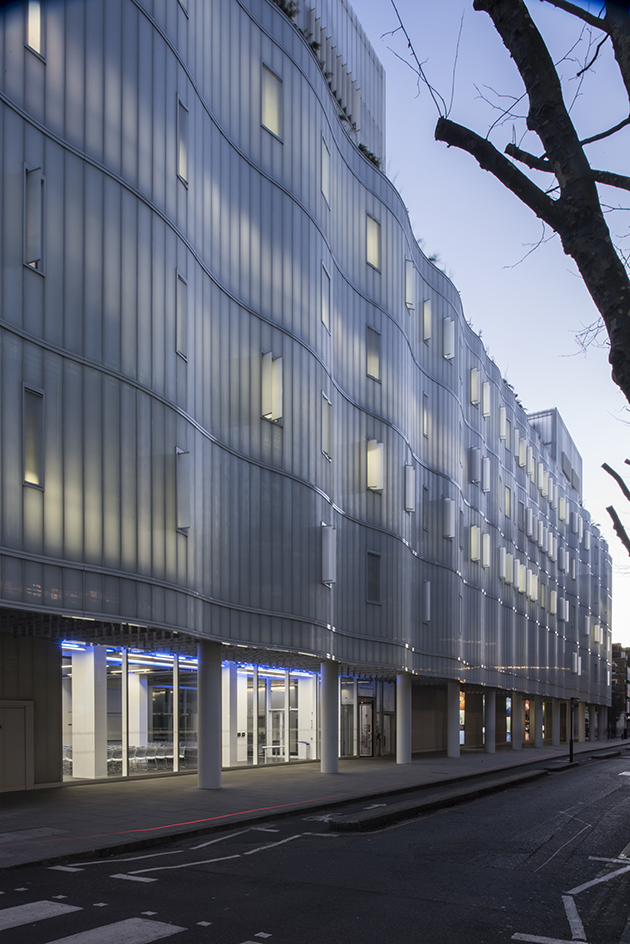
Covered in translucent cast glass, the building will be the new home for the Gatsby Computational Neuroscience Unit (GCNU)
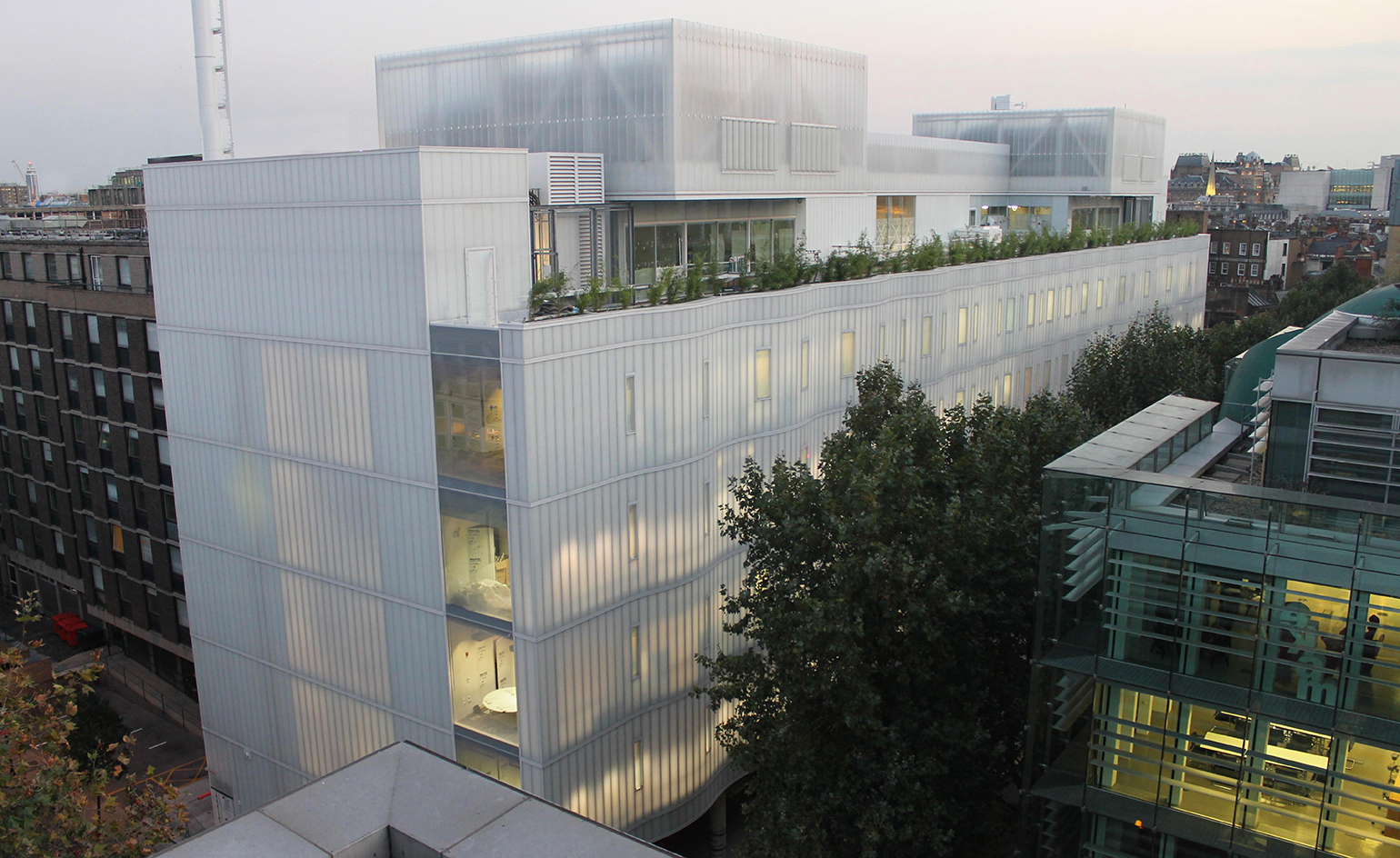
The building’s top floors project out over the pavement, creating a pleasant public colonade on ground level
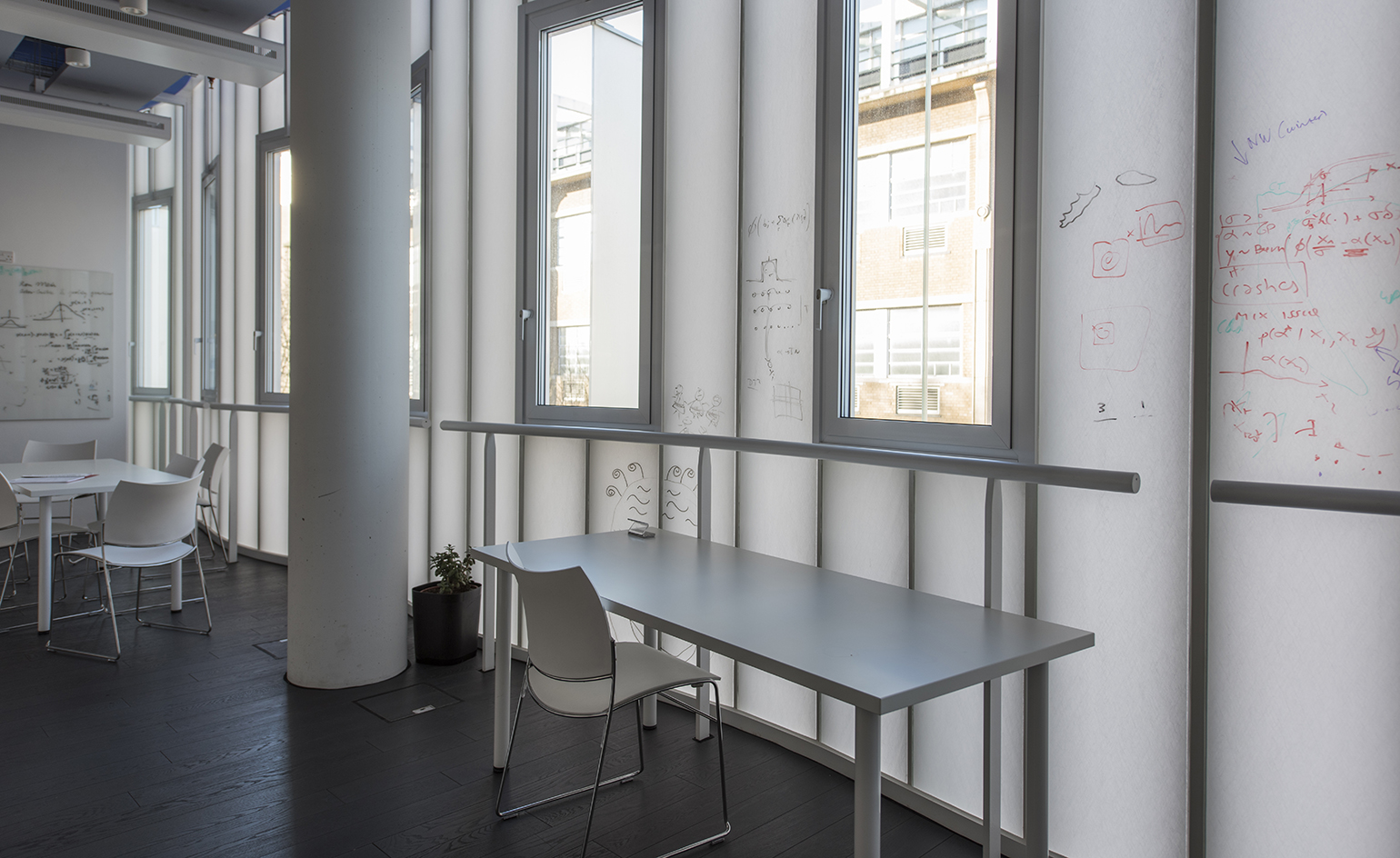
Windows are strategically placed on the façade, so that users can easily open or close them as needed, allowing fresh air to circulate naturally
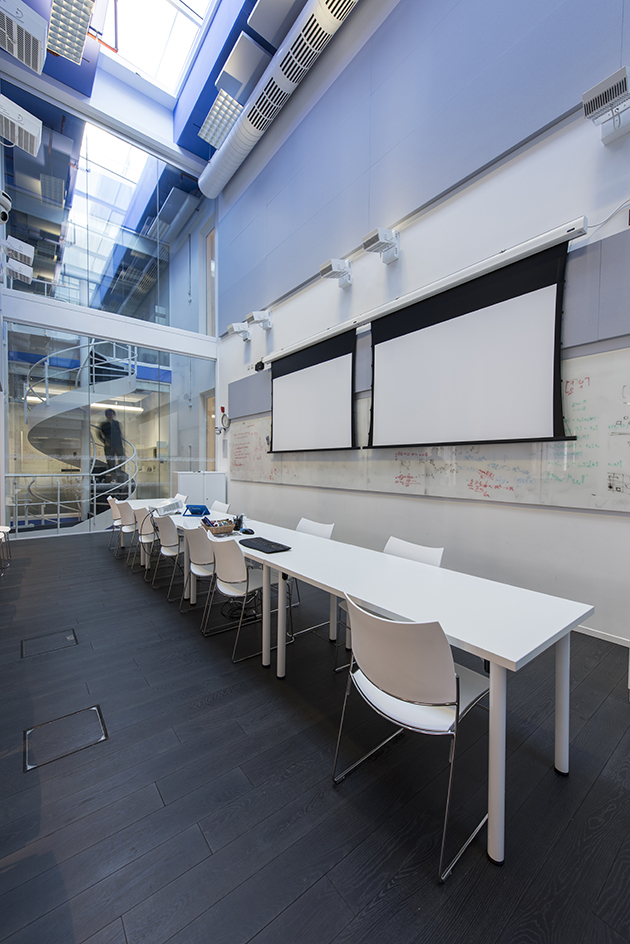
The centre will house an inspiring, cutting edge hub for experimental neuroscience research

The structure was designed to offer privacy from overlooking issues frequently associated with such a central London location. A green terrace on the top level allows users to enjoy the cityscape.
INFORMATION
For more information on the design visit the Ian Ritchie Architects website
Receive our daily digest of inspiration, escapism and design stories from around the world direct to your inbox.
Ellie Stathaki is the Architecture & Environment Director at Wallpaper*. She trained as an architect at the Aristotle University of Thessaloniki in Greece and studied architectural history at the Bartlett in London. Now an established journalist, she has been a member of the Wallpaper* team since 2006, visiting buildings across the globe and interviewing leading architects such as Tadao Ando and Rem Koolhaas. Ellie has also taken part in judging panels, moderated events, curated shows and contributed in books, such as The Contemporary House (Thames & Hudson, 2018), Glenn Sestig Architecture Diary (2020) and House London (2022).
-
 Curvilinear futurism meets subtropical beaches at Not A Hotel’s ZHA-designed Okinawa retreat
Curvilinear futurism meets subtropical beaches at Not A Hotel’s ZHA-designed Okinawa retreatZaha Hadid Architects has revealed the design for the first property in Not A Hotel’s futuristic new Vertex collection, coming soon to southern Japan
-
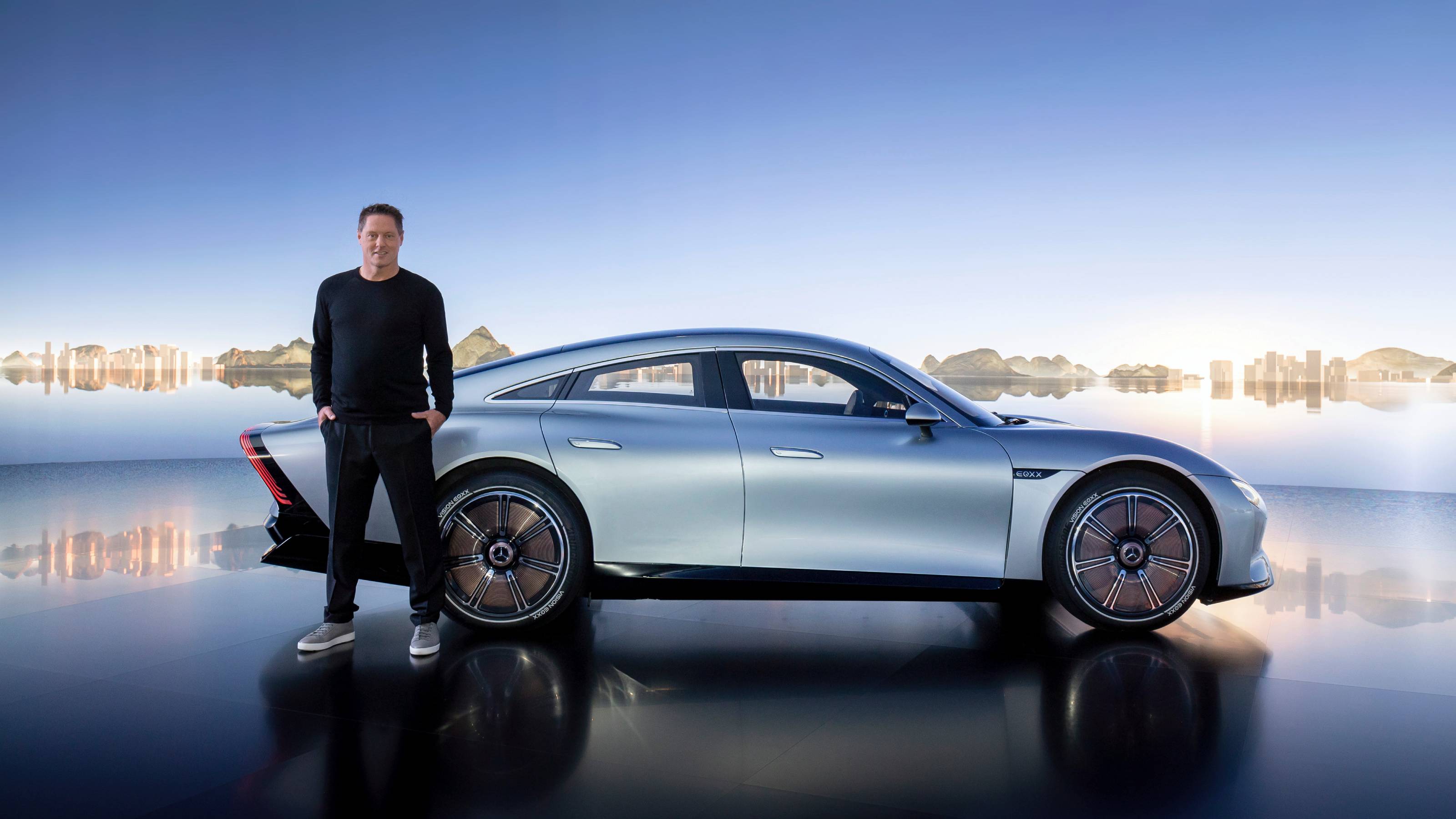 Gorden Wagener leaves the helm of Mercedes-Benz design after 28 years with the company
Gorden Wagener leaves the helm of Mercedes-Benz design after 28 years with the companyThe German designer is stepping down from the role of chief design officer at Mercedes-Benz. We look back at his influence and impact on the world of automotive and luxury design
-
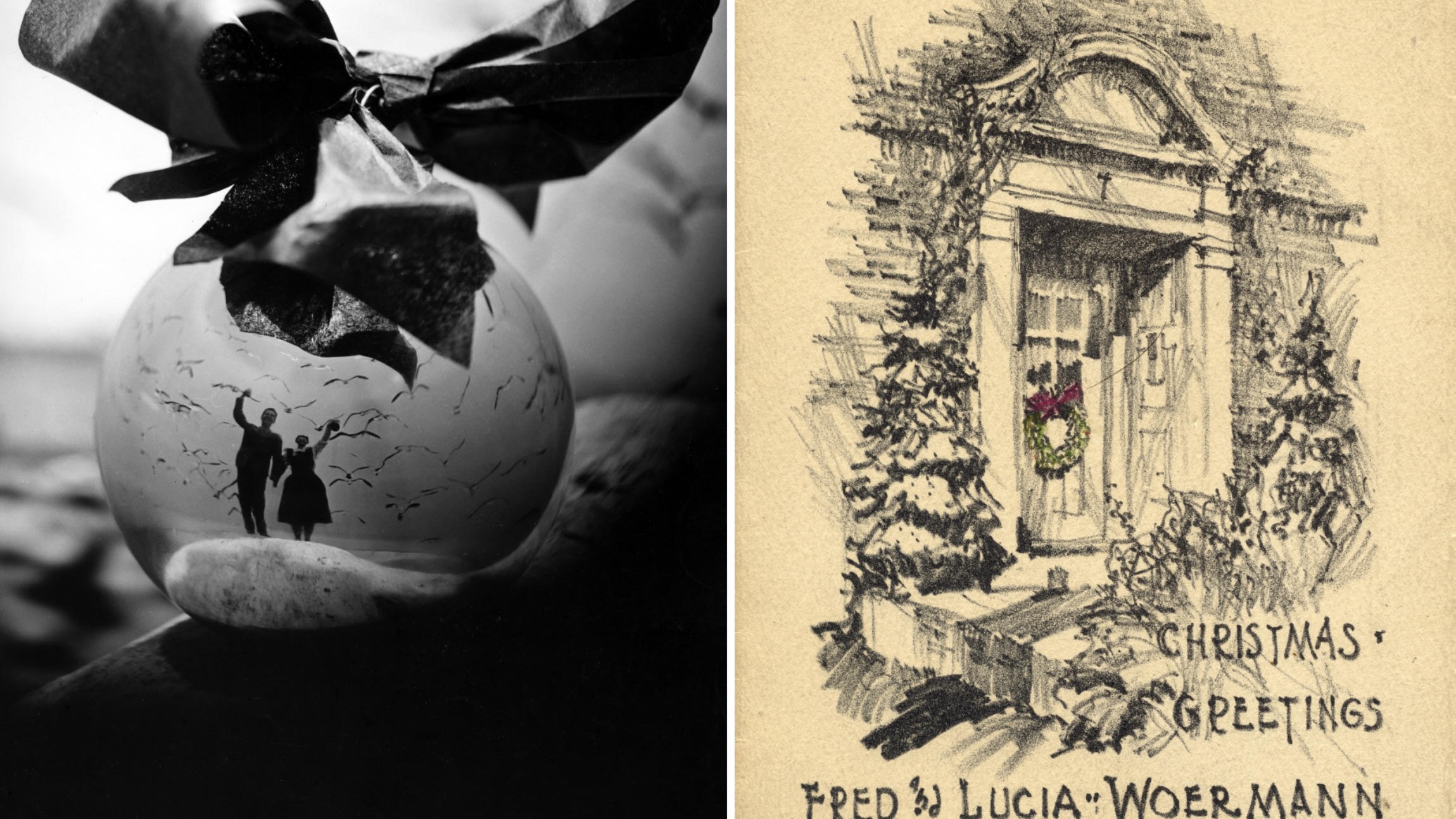 These Christmas cards sent by 20th-century architects tell their own stories
These Christmas cards sent by 20th-century architects tell their own storiesHandcrafted holiday greetings reveal the personal side of architecture and design legends such as Charles and Ray Eames, Frank Lloyd Wright and Ludwig Mies van der Rohe
-
 Arbour House is a north London home that lies low but punches high
Arbour House is a north London home that lies low but punches highArbour House by Andrei Saltykov is a low-lying Crouch End home with a striking roof structure that sets it apart
-
 A former agricultural building is transformed into a minimal rural home by Bindloss Dawes
A former agricultural building is transformed into a minimal rural home by Bindloss DawesZero-carbon design meets adaptive re-use in the Tractor Shed, a stripped-back house in a country village by Somerset architects Bindloss Dawes
-
 RIBA House of the Year 2025 is a ‘rare mixture of sensitivity and boldness’
RIBA House of the Year 2025 is a ‘rare mixture of sensitivity and boldness’Topping the list of seven shortlisted homes, Izat Arundell’s Hebridean self-build – named Caochan na Creige – is announced as the RIBA House of the Year 2025
-
 In addition to brutalist buildings, Alison Smithson designed some of the most creative Christmas cards we've seen
In addition to brutalist buildings, Alison Smithson designed some of the most creative Christmas cards we've seenThe architect’s collection of season’s greetings is on show at the Roca London Gallery, just in time for the holidays
-
 In South Wales, a remote coastal farmhouse flaunts its modern revamp, primed for hosting
In South Wales, a remote coastal farmhouse flaunts its modern revamp, primed for hostingA farmhouse perched on the Gower Peninsula, Delfyd Farm reveals its ground-floor refresh by architecture studio Rural Office, which created a cosy home with breathtaking views
-
 A revived public space in Aberdeen is named Scotland’s building of the year
A revived public space in Aberdeen is named Scotland’s building of the yearAberdeen's Union Terrace Gardens by Stallan-Brand Architecture + Design and LDA Design wins the 2025 Andrew Doolan Best Building in Scotland Award
-
 A refreshed 1950s apartment in East London allows for moments of discovery
A refreshed 1950s apartment in East London allows for moments of discoveryWith this 1950s apartment redesign, London-based architects Studio Naama wanted to create a residence which reflects the fun and individual nature of the clients
-
 In this Cotswolds home, drama meets minimalism
In this Cotswolds home, drama meets minimalismCotswolds home Hiaven house, with interiors designed by McLaren Excell, is a perfect blend of contemporary chic and calm, countryside drama